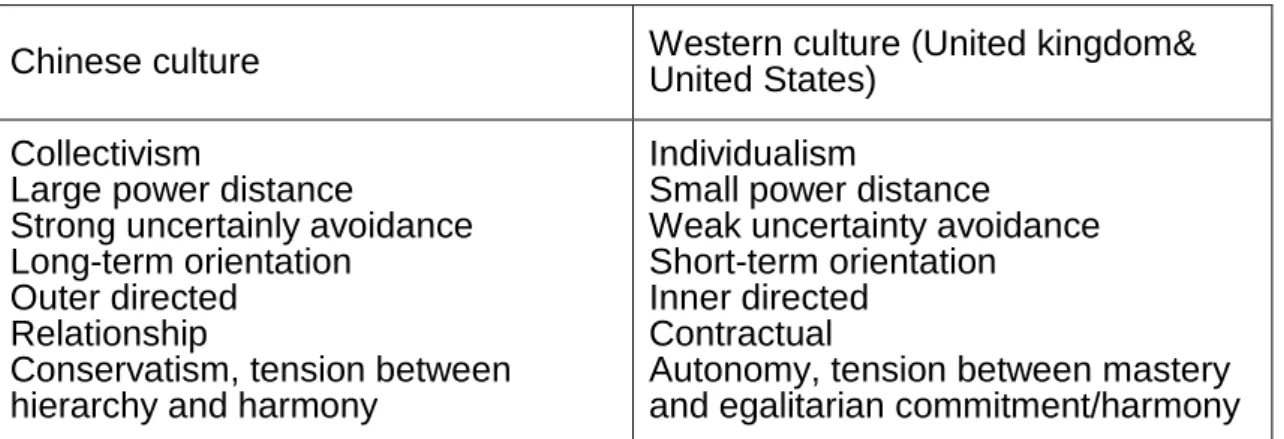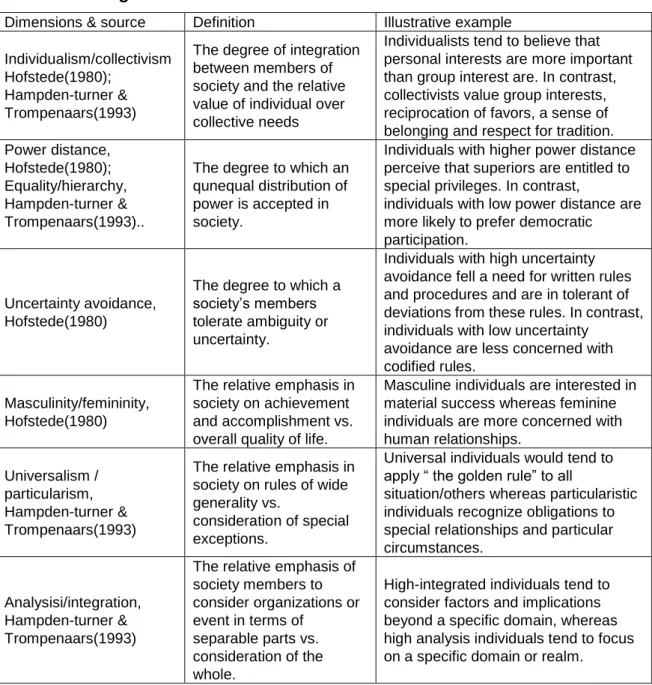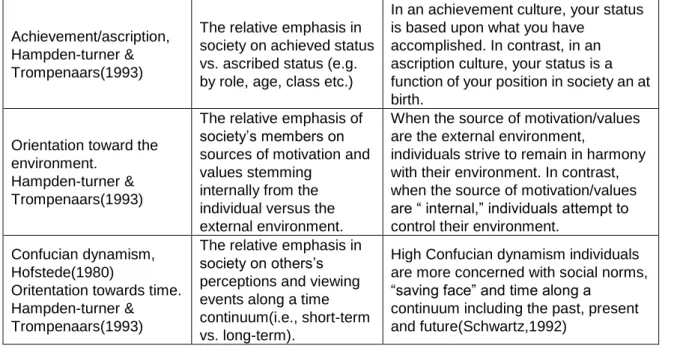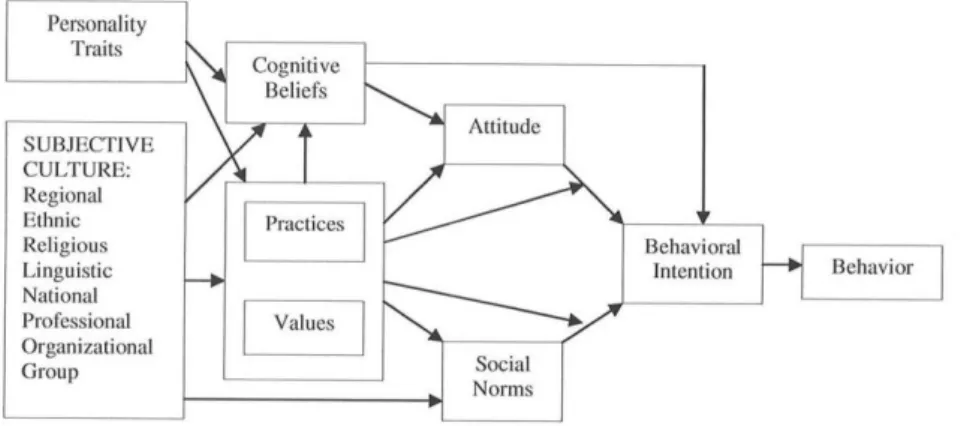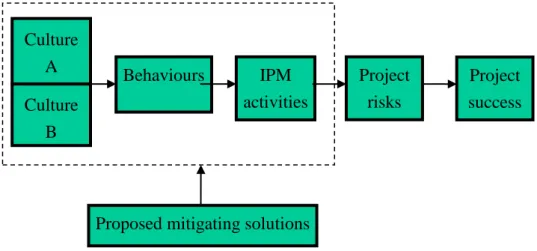Howes and Tah (2003) argue that international project management is a business venture operating in a foreign market. Gray and Larson (2003) conclude that "the biggest challenge international project managers face is the reality that what works at home may not work in a foreign environment". What are the cultural differences that affect international project management and how they affect will be addressed.
It is essential to understand the meaning of the term "culture" before discussing cultural differences in international project management. In fact, there is no single definition that can summarize the entire context of the term "culture". Regarding cultural dimensions, some of the most influential works on intercultural dimensions are those of Hofstede (1980), Trompenaars (1993) and Schwartz (1994).
The concept of culture can be defined at the organizational, industrial and national level, where all levels are relevant in the context of international project management (Loosemore, 1999). 34; Communication problems have emerged as one of the most important contemporary challenges facing construction project managers in an increasingly international construction market" (Tone, Skitmore & Wong, 2009). Gray and Larson (2003) argue that differences Cultural barriers can actually be a barrier to effective communication due to language differences.
Chen, Partington and Qiang (2009) conducted a study on cross-cultural understanding of the conceptions of their work by Chinese and British construction project managers.

Conclusions
Review of gaps in previous research on international projects
Introduction
Some conclusions from the literature review
To our knowledge, there is still a lack of systematic and scientific studies on the management of multicultural groups in construction projects. The earlier project management researchers, mainly from industrial engineering, have concentrated on the technical aspects and showed less interest in the social aspects of project management. Therefore, the issue of culture management has not been seriously addressed in project management studies.
The problem becomes more complicated when it comes to international construction projects involving different actors with different cultural backgrounds' (Dadfar & Gustavsson, 1992). Eriksson, Lillieskold, Jonsson, and Novosel (2002) and Kruglianskas and Thamhain (2000) agree that while many studies examine the role of culture in management, very few are. Shore and Cross (2005) argue that most research on cultural differences is done from a cultural perspective and is not linked to international project success.
Although no study has specifically identified and linked cultural dimensions to project management issues, there have been a few studies that have addressed the cultural issue.‖. Are there situations or conditions where different cultures can influence international projects, but some common characteristics can be generalized. From literature review, many researchers have already recognized that cultural issues definitely affect project management project practices through various research methodologies including case study, survey, Delhpi study with AHP (Bony 2010; Chen, et al.,2009; . Muriithi & Crawford, 2003; Pheng & Leong 2000 , Gunhan & Arditi, 2005).
The results clearly show that cultural differences undoubtedly have some effect on project management activities. In other words, are there any relationships between cultural behavior and project activities, and is it possible to establish relationships between them. From Chinese government statistics, the trade volume between these two countries was more than 16 billion USD in 2009.
For example, there are 65 major projects being executed on the African continent (including a $1.6 billion investment in a hydro plant in Botswana) financed by the collaboration between the Standard Bank of South Africa and the Commercial Bank of China (Internet resource, 2011). These facts indicate that there should be closer relations between South Africa and China in terms of project management practice in the future.
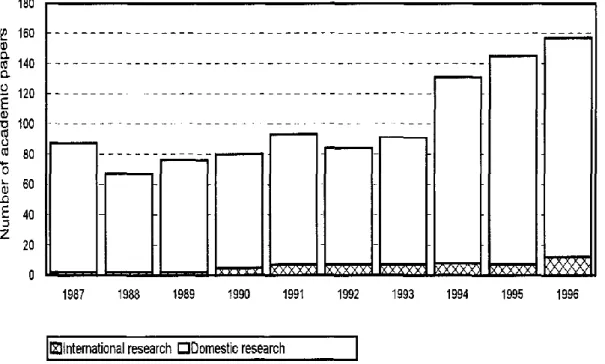
Summary
Conceptual model for international project management
- Introduction
- The identification of typical Chinese behaviours
- The key activities affected by cultural differences in an international project management process
- The proposed solutions for overcoming cultural differences in international project management
- A proposed conceptual model for managing cultural difference in international project management
- Conclusions
Thus, for the purpose of this research study, the Chinese behavior should be identified to explore the cultural differences that may affect international project management. B3.6 The ability to build good Guanxi (personal relationships) is a critical criterion for a competitive manager (Buckley, Clegg & Tan, 2006). A review of the existing literature indicated that limited formal research has been conducted regarding project management activities that may be influenced by cultural differences, particularly in the arena of international project management with construction projects.
Influencing project management activities is one way cultural differences can influence the project management process. This research identifies the project management activities that can be easily influenced by cultural differences. Different researchers can identify different project management activities that can be influenced by cultural differences.
Some researchers (Chan, Wong and Scott, 1999; Pheng and Leong, 2000; Chen and Partington, 2004) have pointed out some project management activities which can be easily influenced by Chinese culture. Project conflict resolution: Chen and Partington (2004) state that cultural differences result in Chinese and UK project managers describing different. In the world of project management, many project managers use the Project Management Body of Knowledge (PMBOK) as a guide in conducting their project management process.
PMBOK is a structured approach to project management developed by the Project Management Institute. In this research, we use the processes of PMBOK (2008) as the typical project management processes. From the above literature studies, the following possible solutions for overcoming cultural differences can be listed.
It illustrates the relationships identified in the literature as key relationships between cultural differences in international project success. The difference in cultural behavior may lead project managers to behave differently in international project management (IPM) activities. This is suggested as the possible reasons for risk emergence due to cultural differences in international project management.
This conceptual model provides a clear picture of the way in which cultural differences affect project success by changing the risk profile. The model shows a proposed solution to mitigate the negative effects that stem from cultural differences.
